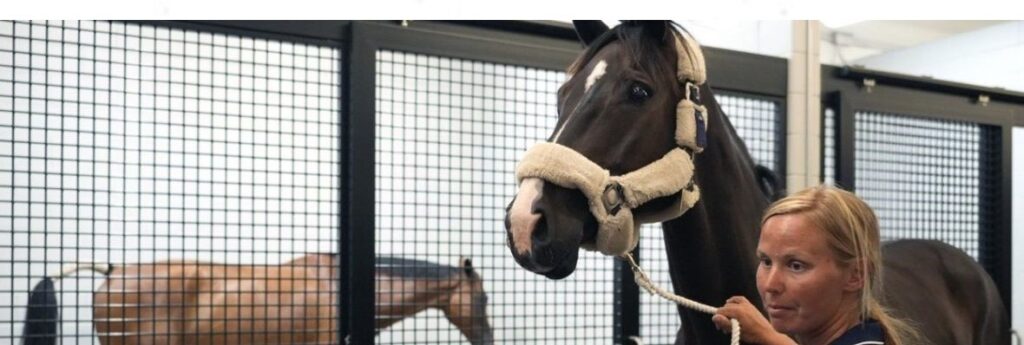Welcome aboard, hope you are standing comfortably. For the horses on the US eventing team, the journey to France for the Paris Olympics was – quite literally – a four-legged journey.
Their trek began on a farm in Pennsylvania. They were driven to JFK airport to board an eight-hour flight to Luxembourg. The following afternoon the horses went by lorry to their pre-Olympic base camp in Vittel, located about four hours outside of Paris.
Having rested, shaken off jet lag and done some gentle trotting, they were scheduled to reach the Palace of Versailles for their Olympic check-in on Wednesday. The eventing competition gets underway Saturday with team and individual dressage in the regal gardens of Versailles, once the residence of French royalty where Louis XVI and Queen Marie Antoinette held lavish banquets.
Susan Johns, the team veterinarian, said the horses actually prefer flying.
“To be honest it’s much easier than being in a lorry, there’s much more stability than being driven. Padding, bedding, everything possible was provided in case the take off and landing was abrupt,” she explained. “They don’t really sleep on the flight, they’re standing upright. But they’re good at resting, they have hay nets and are mostly eating.”
Here’s a closer look at how the horses journeyed to France.
Horses need passports
Like humans, horses have passport controls to check that they are the right horse. Paperwork, such as vaccines and blood tests, is also checked for each horse.
The quirky-sounding, horse passenger list for the early hours flight to Luxembourg read as follows: Fedarman B; HSH Blake; Off The Record; Cooley Nutcracker; Diabolo; Commando 3, and QC Diamantaire. The riders themselves all arrived separately to Paris.
Horses’ in-flight meals
Once at JFK, the horses – four of which will be reserves at the Paris Games – were put onto palates and lifted onto the Boeing 747 plane by forklift.
Accompanied by a few human passengers, the horses travelled two a stall with a dividing wall between them, somewhat like an arm rest for horses. Other equipment, including saddles and helmets, were loaded on, along with giant nets of hay and big jugs of water.
As boarding time approached, one horse was massaged on its lower neck by a groom. Then the horses – all “pros” that have flown multiple times before – trotted calmly into their stalls. A thunderstorm delayed the flight by more than two hours, but otherwise the process went smoothly.
Horse carry-ons and tray tables
The passengers were checked on regularly and each horse had their own hay net, hung up in their stall.
“Like when have your tray table which comes down, they have their hay net,” the team’s chief of mission Hallye Griffin observed. “Each horse has their own tack bag, similar to a carry-on bag.”
Hydration is crucial on the flight. Horses drink around 19 litres of water from their regularly filled buckets, with apple slices sometimes added to encourage them to drink regularly.
Horses and jet lag
Once the horses landed in Luxembourg, they were checked through customs and driven to Vittel. Inside the lorry transporting them, they were separated by a small divider wall.
Other grooms were already in Vittel and helped unload the horses when they arrived. Some horses like to roll around to get any itches off, while others prefer to stretch their Olympic limbs and are hand-walked by grooms.
Horses also experience jet lag. Their bodies must adjust to sleep and changes to their feeding schedule, so the first couple of days are all about easing them back into a rhythm.
Then the serious business starts. When they arrived in Versailles on Wednesday, a container with mucking out equipment was ready and one groom assigned to each horse on site.
Horses are tested twice daily for their temperature in Versailles, to make sure there’s no fever that could be spread. Horse passports are verified and vaccination dates checked.
Throughout their Olympic journey, the horses were given treats to keep them in a contented mood – things like carrots, peppermint, or special horse cookies.
The people travelling with the horses enjoyed a few perks, too. No long queues, stuffy airports or hanging around sweaty departure lounges in summer.
“It’s awesome, it’s actually the preferred way to travel,” said Stephanie Simpson, who is the groom for two horses and is working at her second Olympics. “I don’t have to go to real airports and sit next to real people,”

